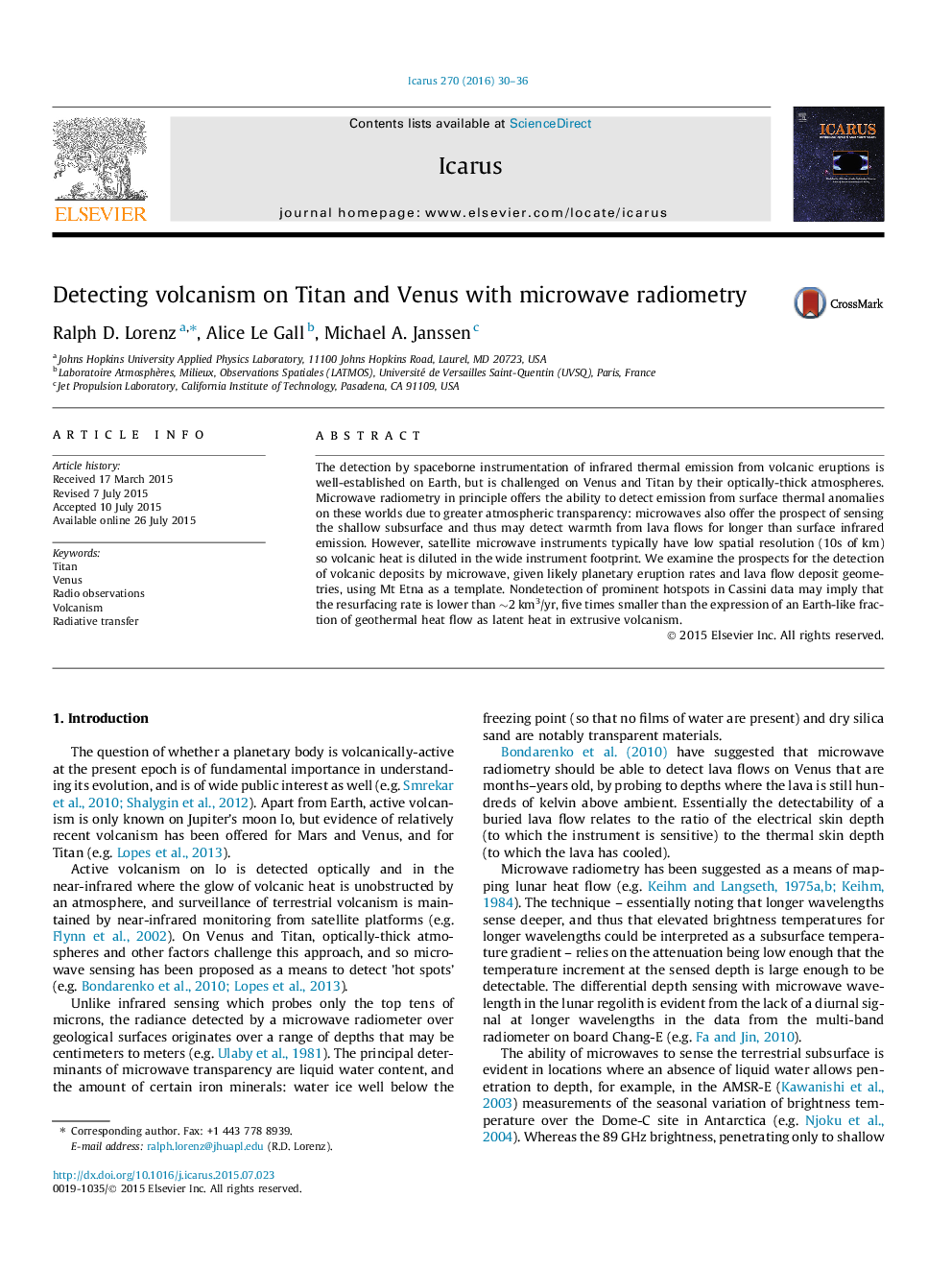| کد مقاله | کد نشریه | سال انتشار | مقاله انگلیسی | نسخه تمام متن |
|---|---|---|---|---|
| 1772925 | 1523520 | 2016 | 7 صفحه PDF | دانلود رایگان |
• Evaluates microwave emission from hot deposits on Titan and Venus.
• Microwaves sense to depth, allowing flows to be detectable long after emplacement.
• Considers Cassini constraints on Titan cryovolcanism.
• Evaluates Venus and Titan surveys on future missions.
The detection by spaceborne instrumentation of infrared thermal emission from volcanic eruptions is well-established on Earth, but is challenged on Venus and Titan by their optically-thick atmospheres. Microwave radiometry in principle offers the ability to detect emission from surface thermal anomalies on these worlds due to greater atmospheric transparency: microwaves also offer the prospect of sensing the shallow subsurface and thus may detect warmth from lava flows for longer than surface infrared emission. However, satellite microwave instruments typically have low spatial resolution (10s of km) so volcanic heat is diluted in the wide instrument footprint. We examine the prospects for the detection of volcanic deposits by microwave, given likely planetary eruption rates and lava flow deposit geometries, using Mt Etna as a template. Nondetection of prominent hotspots in Cassini data may imply that the resurfacing rate is lower than ∼2 km3/yr, five times smaller than the expression of an Earth-like fraction of geothermal heat flow as latent heat in extrusive volcanism.
Journal: Icarus - Volume 270, 15 May 2016, Pages 30–36
